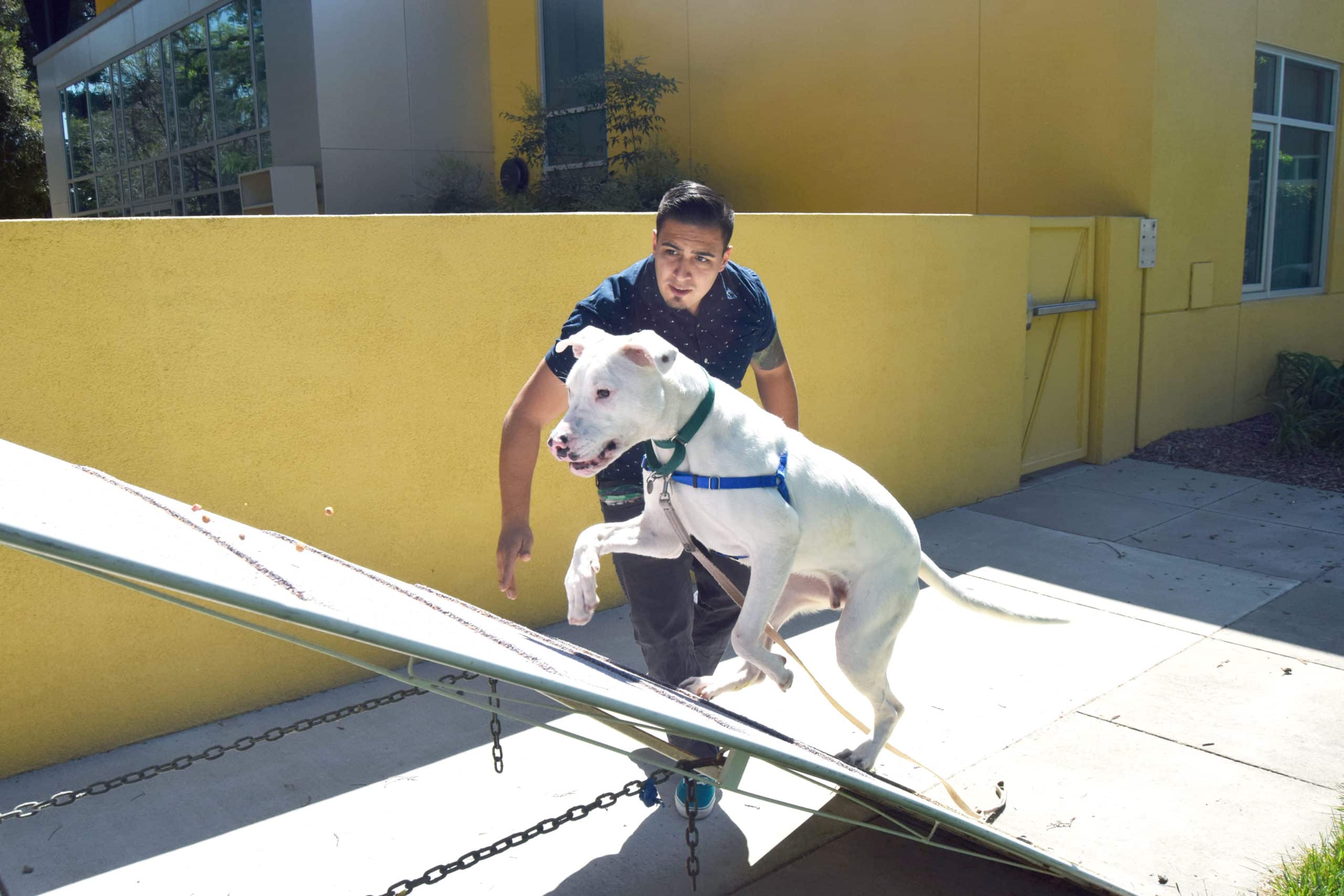This article is part of our series of informational tips for volunteer foster families.
Consider making a long-term difference through short-term care by signing up to foster animals in need.

Crate training is a wonderful decision to make for our foster animals for a multitude of reasons; it provides a safe space that is all their own, it assists in further training opportunities, and it can keep them from getting into mischief. It also enhances the adoptability of our foster dogs and puppies.
- Make the crate a fun and happy place to be. Allow your foster to be able to access the crate whenever they want by keeping the crate in the space where your foster will be spending a lot of time. Make the crate comfortable by placing blankets, towels, or a dog bed in it. Make sure you secure the door open, so the door doesn’t accidentally close.
- Encourage your foster to explore the crate. Toss some treats in and allow the puppy or dog to retrieve them. If your foster seems hesitant to enter the crate, make a treat trail to lure them in. Make sure to start the trail outside of the crate and have it end inside of it.
- Continue to have your foster have a positive association with the crate by feeding their meals in it with the door open. The food bowl should be placed only as far as your foster feels comfortable with the hope that soon you will be able to feed them in the farthest spot of the crate.
- Once your foster is all the way in the crate, close the door, but open it as soon as the meal is finished. Every day increase the time they wait for you to open the door by ten seconds until you can wait ten minutes prior to opening.
- If your foster begins to whine, the length of time may have been increased too quickly. For the next feeding, take a step back and remove a several seconds of waiting before building the time back up. If the dog or puppy is whining, do not open the crate until it ends. We do not want to have our fosters associate whining with the crate door opening. It would reinforce a behavior we would prefer they not display.
- Now that food time equals happy crate time, we want to continue the positive association and get our fosters comfortable being in the crate for longer periods of time without us being present. For the first few sessions, stick around the house — but not near the crate. Throw some treats into the crate and have your foster follow, give them something to do like a stuffed kong or chew toy, close the door, and leave for 20-30 minutes. Once your foster dog or pup can handle 30 minutes of quiet crate time, you can begin to leave the house to run short errands and gradually work up to four hours.
Don’t worry about having to take a step back in the training process or taking it slow, all dogs learn at different speeds and all have different levels of comfort. The goal is to have a good training experience for the both of you!



